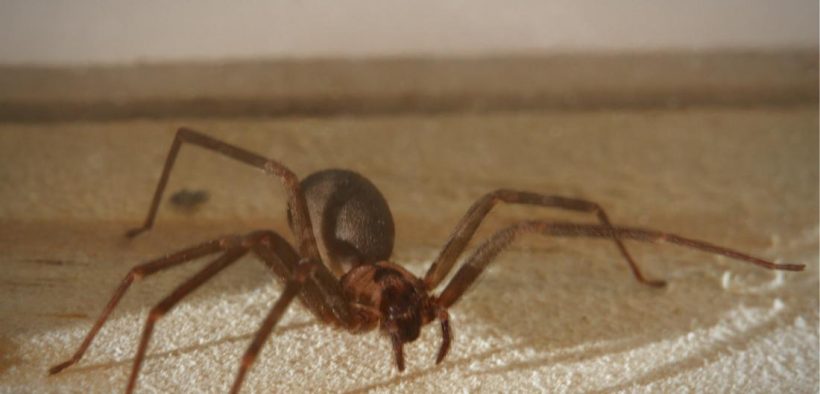Poisonous spider that lurks in clothes and furniture with toxic venom that ROTS human flesh is discovered in Mexico
Share

Scientists have discovered a species of venomous spider with venom so potent that it rots human flesh with a single bite.
Lesions of dead flesh up to 14 inches (40cm) wide can be caused by an attack, but the animal is not thought to be lethal.
It has been found living in household furniture and fabrics in central Mexico, and has been given the proper name Loxosceles tenochtitlan by its discoverers.
The arachnid was found in central Mexico by researchers from the National Autonomous University of Mexico (UNAM) in the city of Tlaxcala.
The new species was discovered by biologist and university professor Alejandro Valdez-Mondragon together with his students Claudia Navarro, Karen Solis, Mayra Cortez and Alma Juarez, according to the UNAM.
Analysis of the creature revealed it is native to the Valley of Mexico region.
The academics initially mistook the beast for another related species which lives in the Mexican states of Guerrero and Morelos- Loxosceles misteca.
Professor Valdez-Mondragon told local media: ‘As it is very similar to the Loxosceles misteca we thought that it had been introduced to this region by the shipping of ornamental plants, but when doing molecular biology studies of both species, we realised that they are completely different.’
Professor Valdez-Mondragon also warned that the species lashes out at humans with its vicious bite if it feels threatened.
Known as a recluse spider, the eight-legged critter is most comfortable hiding in holes, between objects, furniture or in walls.
‘We provide them with the temperature, humidity and food to establish themselves in our homes, which puts us at risk of having an accident with them, although they also perform an important ecological function when feeding on insects,’ Professor Valdez-Mondragon adds.
Experts say the spiders can be avoided by keeping a neat and tidy house, removing any potential hiding spots.
Mexico is the country with the highest diversity of the genus Loxosceles as 40 out of the 140 species that exist in the world are native to the country.








